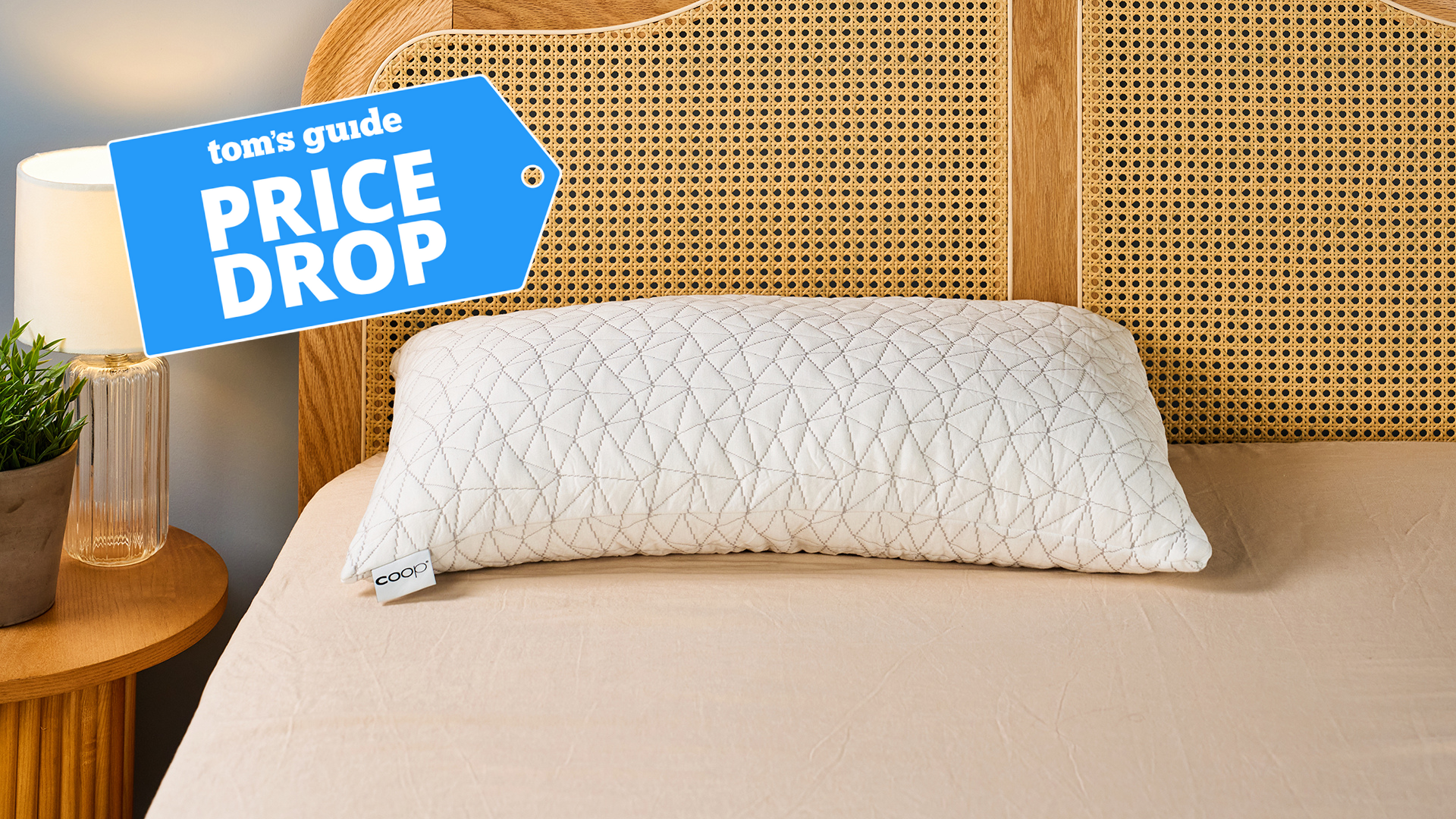
There’s an exercise I recently took up every morning for one week — the Jefferson curl. If you want to increase spine mobility, stretch your back and boost hamstring flexibility, here’s an exercise for you.
I chose to use a light dumbbell to assist with the otherwise bodyweight exercise, but you could use one of the best kettlebells, adjustable dumbbells, or barbells. Adding weight makes the move more intense, but I recommend prioritizing finding a deficit by standing on a bench or similar. If you can do both — perfect.
To help you get started with this mobility-boosting move, I'll explain some of the benefits of Jefferson curls, how to do them, ways to progress or regress the move and what happened when I tried these curls for one week.
How to do Jefferson curls
The Jefferson curl is one of the three mobility exercises I recommend to unlock tight hips and boost hamstring flexibility. If you have limited flexibility and struggle to touch your toes, try this loaded mobility exercise on flat ground first.
Once you develop flexibility in your back, glutes and hamstrings — muscles located along the posterior chain (back body) — using a bench or step will help you drop past your toes and deeper into the stretch.
- Stand on the edge of a step or sturdy bench
- Level your toes with the edge of the surface
- Softly tuck your pelvis toward your spine and allow both arms to go heavy
- Stand tall, finding length through your spine, then tuck your chin toward your chest
- Either using just your body weight or holding a weight in both hands, begin slowly rolling forward, leading with your hands and creating a C-shape curl through your spine
- Lower as far as you can, drawing your chest toward your thighs
- Hang in the bottom position for a moment, allowing your upper body and head to go heavy. Avoid the weight traveling away from your midline
- Slowly reverse the motion to stand up, allowing your head to lift last
The deficit creates more space to fold, allowing your hands to travel past your toes. The stretch can be quite intense for your back, particularly if you have a tight midback, hamstrings, or glutes, so start with your body weight and only add weight slowly over time. Keep your legs straight throughout, softly bending the knees if you have tight hamstrings.
Some trainers will recommend prioritizing locked out legs only, sending focus into the hamstrings. If you want to prioritize your back, a soft knee bend will reduce the intensity but allow you to drop slightly further.
Get instant access to breaking news, the hottest reviews, great deals and helpful tips.
To counteract the effects of sitting all day, the Jefferson curl makes a great staple in your mobility routine. I added the exercise to my morning ritual every day for one week, and here’s what I learned.
It feels amazing
I’m fairly new to the Jefferson curl but it’s a gamechanger. I’m familiar with the forward fold movement through yoga, but this variation helped me reach a deeper stretch through my back and hamstrings and relieved tension in my tight midback.
However, it's worth noting that the curl, originally designed to help stretch and strengthen the spine, has courted some controversy over the years. Some trainers even take it off the table altogether and won't program it. One reason is it's super easy to get injured if your form is off. Follow the steps above if you plan to try it, and avoid defaulting into a hip hinge.
It isn't a deadlift, so rather than sending your bum backward and maintaining a flat back, you'll focus on keeping the legs in position and rounding your spine as you curl and lower your torso.
My back feels more open
One of the benefits of stretching is that you feel an instant improvement in your body. But it takes regular commitment to feel the long-term benefits, such as reduced pain, better posture and movement quality.
Taking just a few minutes each morning to do the Jefferson curl instantly woke my body up and made me feel taller and more open going into my day. I highly recommend using the curl during warm-ups or cool-downs to support workouts, too.
It's intense on the posterior chain
The weighted stretch derives from gymnastics and is now used by just about everyone from powerlifters to rugby players because the benefits are universal in sports.
Moving the body slowly under load teaches muscular control while building flexibility in the back muscles. If you’re heading into a deadlifting session, squats, or exercises that focus heavily on the muscles surrounding the spine in the lower back, glutes and hamstrings, the Jefferson curl should help improve range of motion beforehand or stretch out tight muscles afterward.
It's also an accessible way to wake up your back body if you find it difficult to engage these muscle groups prior to or after exercise.
My core muscles feel more engaged
During the Jefferson curl, you must resist gravity under load, controlling the entire movement from curling the spine into flexion and uncurling the spine during extension — from start to finish.
Various core muscles like the erector spinae, spinal extensors and internal obliques engage to help control the movement, and I could feel the move in my midsection just as much as I could feel the stretch through my posterior chain.
The main reason you don’t need much weight to feel the benefits of the Jefferson curl is because of a resistance training technique called time under tension. Your muscles work through both phases of the movement and at a slow pace, meaning your muscles are active for longer while stretching under tension.
It’s worth being mindful if you don’t have heavy weights to hand during workouts and still want to increase the intensity of an exercise — one of the best ways to build muscle without lifting heavy weights.
How often should you do Jefferson curls?
I recommend adding the mobility exercise into warm-ups, cool-downs, or morning and evening rituals. 3-4 sets of 8-10 reps is a good place to start using your body weight, then slowly build up using weights as you feel more comfortable with the exercise.
How heavy should Jefferson curls be?
Weight ranges are entirely dependent on the person, so start light and build slowly. I used a 6kg weight (roughly 13 lbs), but you can still build strength and mobility using lighter weights.
You shouldn’t feel pain during the exercise, so stop immediately if you experience any discomfort. The exercise is also contraindicated for anyone struggling with sciatica, chronic back pain, slipped discs, or similar because of the significantly increased range of motion and flexion in the spine.
We’ve put together some handy sciatica exercises to try instead if the curl is off the table for you.
My verdict on the Jefferson curl
I love this exercise but form is crucial to reaping the rewards. Throughout the week, I focused three minutes on performing Jefferson curls under load and in the mirror, using the same weight each day and breathing expansively toward my ribcage and back.
I haven't noticed any life changing improvements in my back so far, but I didn't go into this with an injury or expecting a week to make huge changes to my body. If you plan to try it, be patient with results.
That said, you should feel some positives immediately following the exercise, including a deep stretch and temporary boost to flexibility, particularly the hamstrings.
More from Tom's Guide
- I did 50 resistance band push-ups every day for one week, here's what happened
- A Pilates instructor shares an 8-minute ab workout for 'deep core activation,' so I tried it
- I tried this 20-minute bodyweight abs workout with 14 million views — here’s what happened

Sam Hopes is a level 3 qualified trainer, a level 2 Reiki practitioner and fitness editor at Tom's Guide. She is also currently undertaking her Yoga For Athletes training course.
Sam has written for various fitness brands and websites over the years and has experience across brands at Future, such as Live Science, Fit&Well, Coach, and T3.
Having coached at fitness studios like F45 and Virgin Active and personal trained, Sam now primarily teaches outdoor bootcamps, bodyweight, calisthenics and kettlebells.
She also coaches mobility and flexibility classes several times a week and believes that true strength comes from a holistic approach to training your body.
Sam has completed two mixed doubles Hyrox competitions in London and the Netherlands and finished her first doubles attempt in 1:11.




